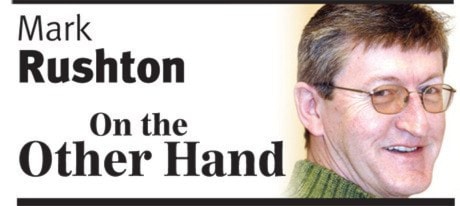At a heated community meeting last week, in which residents and land owners on Sumas Mountain made quite clear to city council the fact that their properties were privately owned and not common land open for public use, I happened to chat with the city’s director of parks and recreation.
In short order the discussion, not instigated by me, led to the tree protection bylaw and his contention that the city must, yet again, have control over private ownership, using the argument that “we do it all the time with private lands (building permits, zoning, etc.).”
He then became quite agitated when I did not agree that the city should have ownership of trees it considers significant.
Now despite what many may believe, I am to an extent an environmentalist. I believe that many aspects of our environment need to be preserved for the common good. However, I also believe that an individual should not be personally required to provide those things for current or future generations.
Therefore I offer for consideration a novel approach, at least to “significant tree” protection in our community.
Firstly, an inventory of all such trees, and they should only be indigenous, needs to be taken throughout the city, including agricultural lands which are not currently protected due to the provincial Right to Farm Act.
This inventory can begin with an aerial survey … obviously, significant trees will stand out due to their height or canopy size. Determining their exact location is a simple matter with a GPS device.
The city should then approach the owner, point out the city’s desire to protect it for the future, and have the tree appraised. Offer the owner current timber market value, paid for through a reduction in property taxes (perhaps phasing the cost over a 10-year period) and register a codicil, caveat, easement or whatever is the appropriate restriction on the property title that the tree is now owned by the city and cannot be removed.
The tree lives, the city has done “the right thing,” the tree huggers are happy, and the now-former owner should be comfortable with the compensation.
Of course, the fact that the tree is now publicly-owned does not grant the city nor the public any rights of access across private property unless that is also compensated for at the time.
I thought it interesting during my brief conversation with the parks director, that when I pointed out that perhaps the only remaining old-growth firs within the city are completely ignored I received a blank reaction as if he and his tree protection staff were unaware of them.
Yet there, standing tall against Sumas Mountain Road, are seven giants which, from all appearances are, as they were called when I was young, virgin timber.
They are huge, scattered in a 200-metre line along a creek, and somehow despite being adjacent the “ancient” Kilgard brickworks survived being cut down to feed the plant’s drying kilns.
And there they stand, without protection, completely unnoticed and overlooked while city staffers still believe it is necessary, for the benefit of all, to target some guy wanting to cut down the oak tree he planted 40 years ago.
Our elected officials need to suggest – nay, demand – that staff adopt a new philosophy and approach – one that looks for innovative and non-punitive ways to solve issues, rather than simply relying on the enactment of laws upon unnecessary laws.
We’d all end up in a happier place, and at the same time council could dispel the notion, at least in Abbotsford, that – as NDP cabinet minister Dave Zirnhelt once said in the 1990s – “government can do anything.”
The NDP found out that was wrong. And, with that philosophy, other governments will eventually find themselves on the outside looking in as well.
markrushton@abbynews.com
